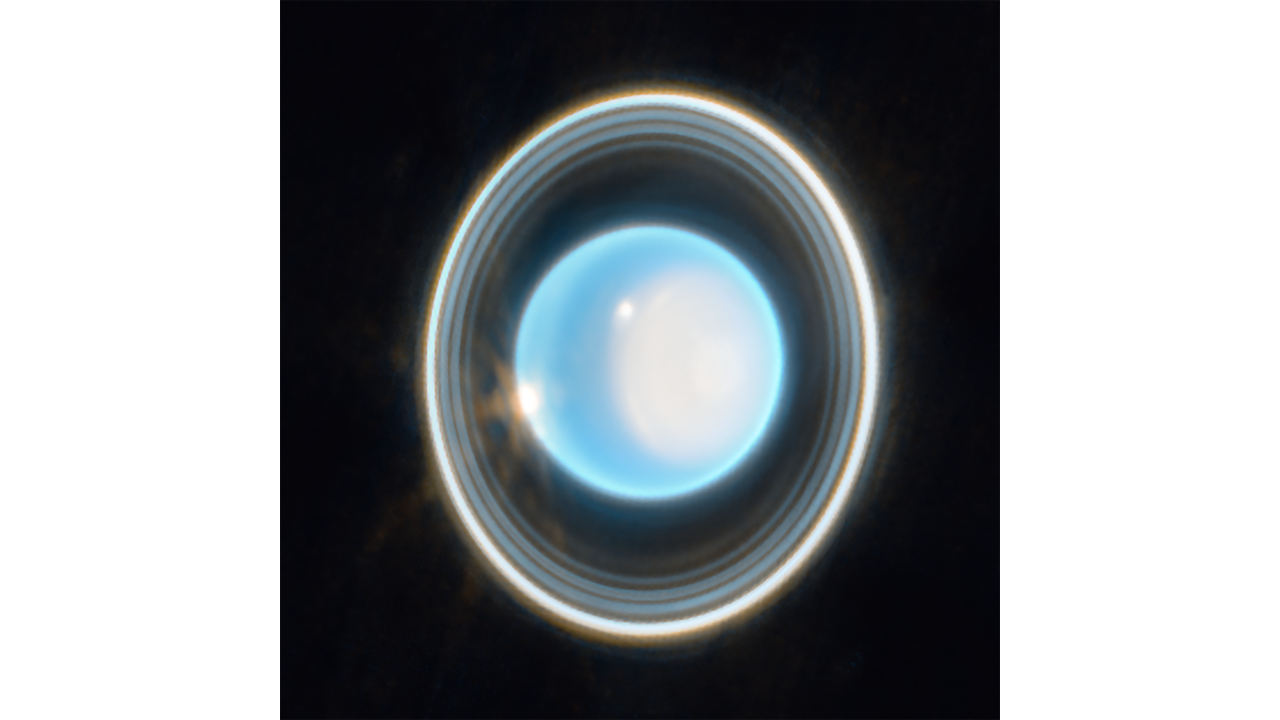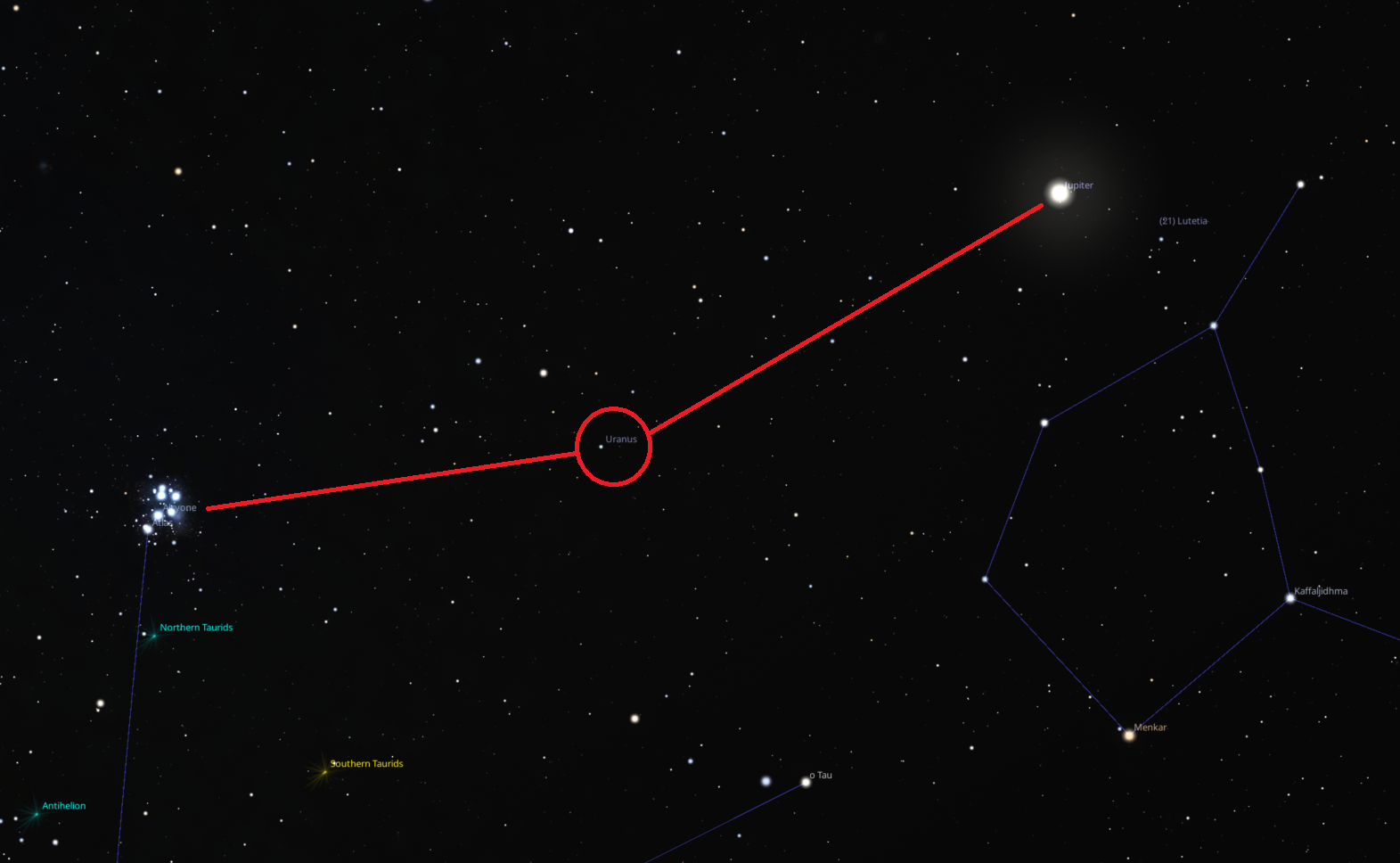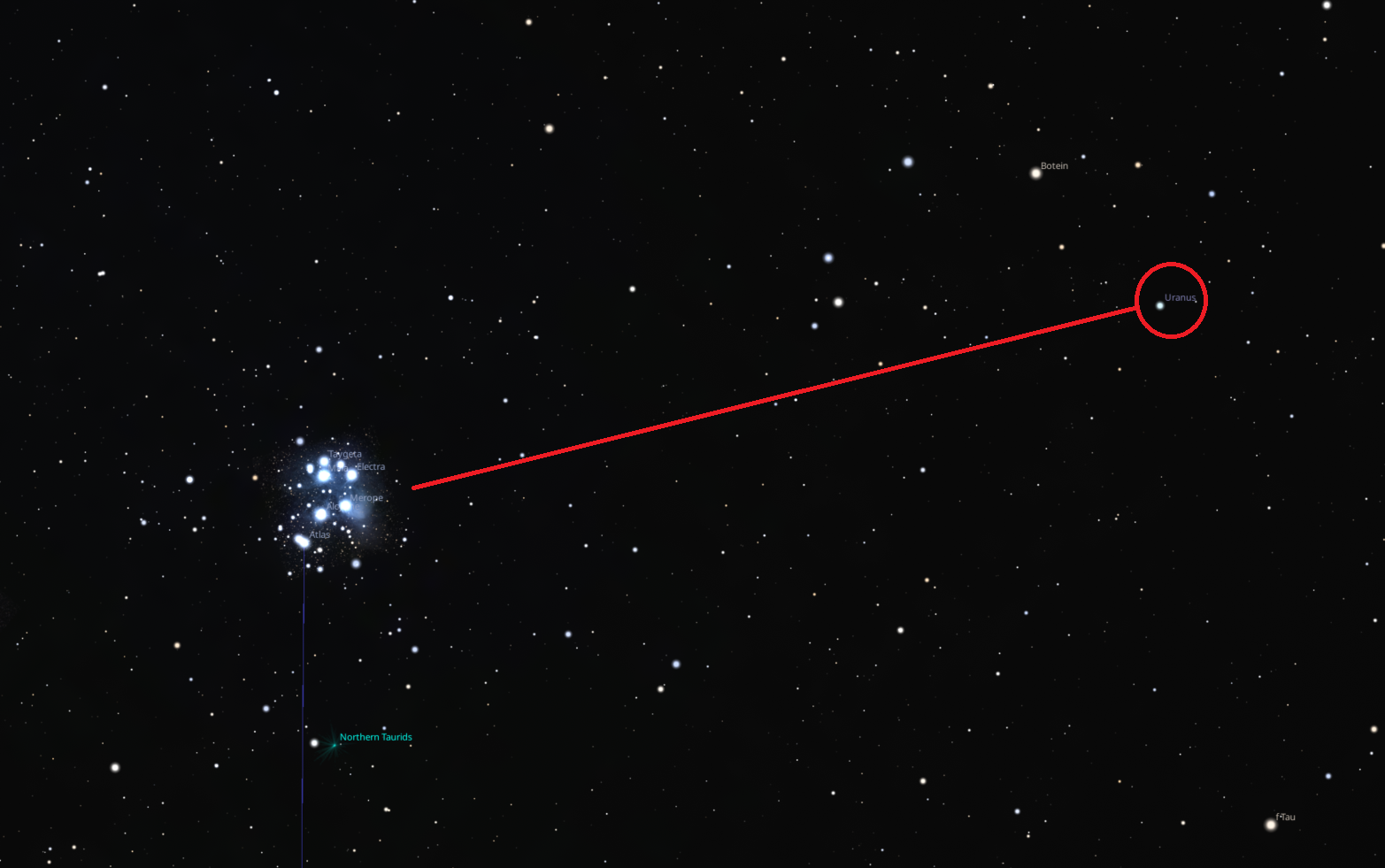

By Liz Kruesi of the Astronomical Society of the Pacific
You might be familiar with Saturn as the solar system's ringed planet, with its enormous amount of dust and ice bits circling the giant planet. But Uranus, the next planet out from the Sun hosts an impressive ring system as well. The seventh planet was the first discovered telescopically instead of with unaided eyes, and it was astronomer extraordinaire William Herschel who discovered Uranus March 13, 1781. Nearly two centuries passed before an infrared telescope aboard a military cargo aircraft revealed the planet had rings in 1977.
Since that discovery, multiple observatories have revealed more details of Uranus and its ring system. Most recently, the NASA-led JWST space observatory captured the planet and its rings in detail. This recent image combines just 12 minutes of exposure in two filters to reveal 11 of the planet's 13 rings. Even some of the planet's atmospheric features are visible in this image. Even with advanced imaging like that from JWST, much of Uranus remains a mystery, including why it orbits the Sun on its side. This is because only one spacecraft has ever visited this planet: NASA's Voyager 2, which flew by the distant planet in the mid-1980s.
Planetary scientists are hoping to change that soon, though. Scientists recommended in a report released last year from the National Academies of Sciences, Engineering, and Medicine that Uranus be the focus on the next big planetary science spacecraft mission. Such a large-scale mission would gain insight into this icy giant planet and the similar solar system planet, Neptune.

This zoomed-in image of Uranus, captured by Webb's Near-Infrared Camera (NIRCam) Feb. 6, 2023, reveals stunning views of the planet's rings. The planet displays a blue hue in this representative-color image, made by combining data from two filters (F140M, F300M) at 1.4 and 3.0 microns, which are shown here as blue and orange, respectively Credits: NASA, ESA, CSA, STScI. Image processing: J. DePasquale (STScI)

Sky map picturing M45, Uranus and Jupiter, Stellarium

Sky map picturing M45 and Uranus, Stellarium
If you want to catch a view of Uranus with your own eyes, now is prime time to view it. This ice giant planet lies perfectly positioned in mid-November, at so-called "opposition," when its position in its orbit places it on the other side of the Sun from Earth. That location means our star's light reflects off Uranus' icy atmosphere, and the planet appears as its brightest.
On November 13, Uranus was overhead just after midnight. Uranus was about halfway between the brilliant planet Jupiter and the diffuse glow of the Pleiades star cluster (M45). While Uranus may look like a bright blinking star in the night sky, its blue-green hue gives always its identity. Look for it with binoculars or a telescope to improve the view.
For more about this oddball planet, visit NASA's Uranus page
This article is distributed by NASA's Night Sky Network (NSN). The NSN program supports astronomy clubs across the USA dedicated to astronomy outreach. Visit nightsky.jpl.nasa.gov to find local clubs, events, and more.
Night Sky Network (NSN) member clubs are dedicated to bringing the wonders of space and NASA science to folks across the USA.NSN program participation provides clubs with tools and resources to assist in their public outreach.
About the Author:
Liz Kruesi is an award-winning science writer and editor, specializing in telling the stories of our incredible universe. She serves as Mercury Editor of Astronomical Society of the Pacific and works toward the ASP's mission of promoting science interest and engagement, while continuing to write about our universe for other outlets. Source: ASP Staffliz Kruesi

This article is distributed by the NASA Night Sky Network, a coalition of hundreds of astronomy clubs across the US dedicated to astronomy outreach. Visit https://nightsky.jpl.nasa.gov to find local clubs, events, and more.
Notes from Tom Campbell:
Tom Campbell, Night Sky Network representative for the Brazos Valley Astronomy Club and Outreach Coordinator, has observed Uranus from the College Station, TX, area and shares his observation of Uranus:
"Uranus is indeed about halfway between Jupiter and the Pleiades right now. At magnitude 6, it will be barely visible with the naked eye, even at a dark site. Although you can see it in binoculars, it will be difficult to distinguish it from other stars in the neighborhood. It does have a slight blue-green cast when sky conditions are good, however."

Article Contributer:
Tom Campbell is a software developer, author, and NASA/JPL Solar System Ambassador who is frequently seen sharing his love of the universe with others. He serves as BVAC Outreach Coordinator.
Website: http://astro.tomandjul.com/

Fall 2023 Newsletter